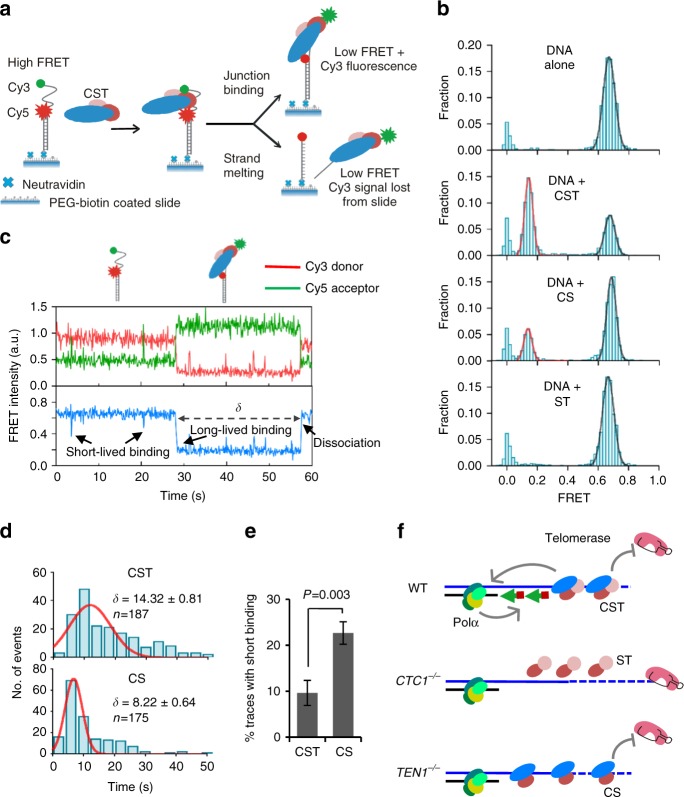Fig. 6.
Removal of TEN1 destabilizes CTC1-STN1 binding. Single molecule FRET analysis of CST, CS or ST binding to DNA junction substrate with 18 nt overhang. a Cartoon showing design of the non-telomeric junction substrate and anticipated FRET signals in the presence or absence of CST. In the absence of CST the flexibility of the 18 nt ssDNA will bring the Cy3 donor and Cy5 acceptor into close proximity and give a high FRET signal. If CST binds without melting the anchoring DNA duplex, the high FRET signal will be lost but emission from the Cy3 donor (green) will be retained. If CST melts the DNA duplex, both the high FRET and the Cy3 donor signal will be lost. b FRET histograms generated from FRET measurements of >4000 single molecules. The zero FRET peak reflects DNA molecules with an inactive or missing Cy3 label. c smFRET real-time trace showing change in individual Cy3 and Cy5 signals (top) and FRET (bottom) with time. Dwell time (δ), long-lived binding, short-lived binding and dissociation events are indicated. d Distribution of dwell times for CST or CS binding before protein dissociation. Histogram shows number of binding and dissociation events within the indicated 4 s time intervals. Red line shows the calculated Gaussian distribution. e Percent of traces showing a short-lived trough in FRET signal after CS or CST addition. Error bars indicate SEM. f A model depicting effects of CTC1 or TEN1 loss on ability of remaining CST subunits to restrain telomerase action and mediate C-strand fill-in

